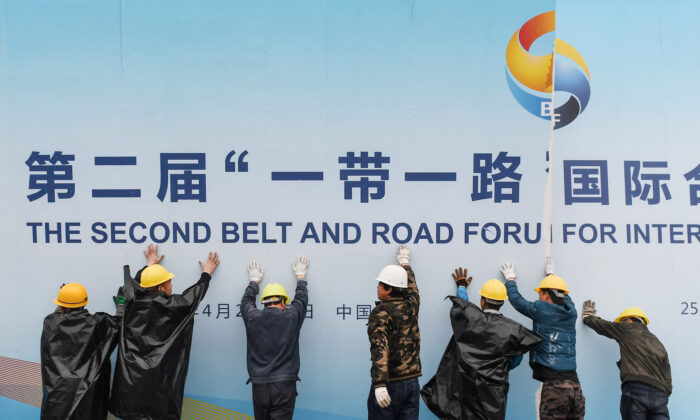Navigating The Chinese Market: The Struggles Faced By BMW And Porsche

Table of Contents
Intense Competition from Domestic Brands
The rise of powerful Chinese automotive brands represents a significant threat to established luxury players like BMW and Porsche. These domestic competitors are not simply playing catch-up; they are aggressively innovating and capturing significant market share.
Rise of Local Competitors
The rapid ascendancy of brands like BYD, Nio, and Xpeng is undeniable. These companies leverage several key advantages:
- Lower prices for comparable features: Chinese brands often offer features comparable to BMW and Porsche at a significantly lower price point, making them highly attractive to a price-sensitive yet increasingly quality-conscious market.
- Stronger focus on electric vehicles (EVs): With China leading the global EV revolution, domestic brands have aggressively invested in electric and hybrid technology, capitalizing on growing consumer demand for eco-friendly options. This is a crucial area where BMW and Porsche need to aggressively compete.
- Effective marketing campaigns targeting younger demographics: Chinese brands excel at targeted marketing campaigns on social media platforms, effectively reaching younger, tech-savvy consumers who represent a significant portion of the luxury car market in China.
- Superior understanding of local consumer preferences: Having a deep understanding of Chinese culture, consumer preferences, and local tastes gives domestic brands a crucial edge in product development and marketing.
Shifting Consumer Preferences
The Chinese consumer is evolving rapidly. Luxury is no longer solely defined by price; it's increasingly about technology, personalization, and sustainability.
- Growing demand for EVs and hybrid vehicles: Environmental concerns are driving increased demand for electric and hybrid vehicles, putting pressure on BMW and Porsche to expand their offerings in this segment.
- Preference for digital connectivity features and advanced driver-assistance systems (ADAS): Chinese consumers expect seamless integration of technology, including advanced driver-assistance features and sophisticated infotainment systems.
- Emphasis on brand image and social status: While brand image remains crucial, Chinese consumers are increasingly discerning, demanding more than just a logo; they seek authenticity and a brand that aligns with their values.
Navigating Regulatory Hurdles and Government Policies
The Chinese automotive market is heavily regulated, presenting unique challenges for international brands.
Stringent Emission Standards
China's increasingly stringent emission standards are pushing automakers to rapidly electrify their fleets. This presents significant challenges:
- Compliance costs for emission standards: Meeting these standards requires substantial investments in research and development, impacting profitability.
- Investment in electric vehicle infrastructure: Beyond the vehicles themselves, significant investment is needed in charging infrastructure and supporting technologies.
- Adapting production lines to meet new regulations: Manufacturing processes must be adapted to meet evolving regulatory requirements, adding to operational costs.
Import Tariffs and Trade Barriers
High import tariffs and trade barriers add a significant cost burden for imported vehicles:
- Impact of import duties on pricing strategies: Import tariffs directly impact pricing strategies, making it harder to compete on price with locally produced vehicles.
- Negotiating favorable trade agreements with the Chinese government: Navigating complex trade regulations and negotiating favorable terms with the Chinese government is crucial for success.
- Localised production to mitigate import tariffs: Establishing local manufacturing facilities helps mitigate the impact of import tariffs and fosters closer ties with the local market.
Cultural Nuances and Marketing Strategies
Success in the Chinese market hinges on understanding and effectively adapting to the unique cultural landscape.
Understanding Chinese Consumer Behaviour
Marketing luxury vehicles in China demands a nuanced approach:
- Importance of social media marketing in China: Social media platforms like WeChat and Weibo are crucial for reaching target audiences and building brand awareness.
- Building relationships with key influencers and opinion leaders: Collaborating with key influencers and opinion leaders can significantly boost brand credibility and visibility.
- Tailoring marketing messages to resonate with specific demographics: Marketing strategies must be carefully tailored to resonate with different age groups, lifestyles, and consumer preferences.
Digital Marketing and E-commerce
China's digital landscape is dominated by e-commerce and mobile platforms:
- Investing in robust digital marketing strategies: A strong online presence is essential for reaching potential customers and driving sales.
- Developing user-friendly mobile applications for sales and service: Mobile-first strategies are crucial for providing a seamless customer experience.
- Leveraging social media platforms like WeChat and Weibo: These platforms are essential for building brand awareness and engaging with potential customers.
Conclusion
Successfully navigating the Chinese automotive market requires a strategic approach that acknowledges intense domestic competition, regulatory hurdles, and unique cultural nuances. BMW and Porsche, despite their established global presence, face significant challenges in this dynamic market. To thrive, they must continue adapting, focusing on innovation in EVs, localized production, and sophisticated digital marketing strategies tailored to the specific needs and preferences of the Chinese consumer. Understanding and effectively addressing these challenges will ultimately determine their long-term success in this lucrative yet demanding market. To learn more about effective strategies for the Chinese automotive market, continue your research into successful market entry and expansion plans.

Featured Posts
-
 Fck Yeah Are You Kidding Me A Thunderbolt Stars Honest Take On Nepotism
Apr 26, 2025
Fck Yeah Are You Kidding Me A Thunderbolt Stars Honest Take On Nepotism
Apr 26, 2025 -
 Galerie Le Labo Du 8 Decouvrez L Exposition Photo De Pierre Terrasson
Apr 26, 2025
Galerie Le Labo Du 8 Decouvrez L Exposition Photo De Pierre Terrasson
Apr 26, 2025 -
 Chelsea Handler Netflix Special Trailer And Release Date Announced
Apr 26, 2025
Chelsea Handler Netflix Special Trailer And Release Date Announced
Apr 26, 2025 -
 Zuckerbergs Meta In A Trumpian World Opportunities And Obstacles
Apr 26, 2025
Zuckerbergs Meta In A Trumpian World Opportunities And Obstacles
Apr 26, 2025 -
 Bmw And Porsche In China Market Headwinds And Strategic Adjustments
Apr 26, 2025
Bmw And Porsche In China Market Headwinds And Strategic Adjustments
Apr 26, 2025
